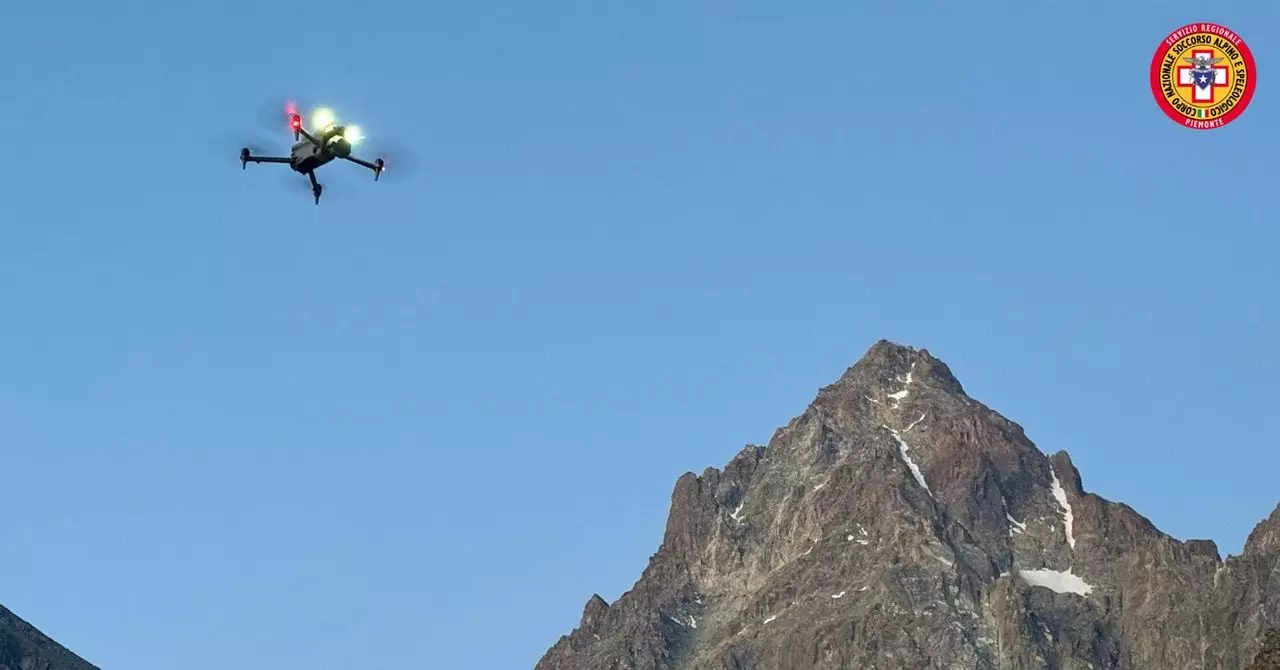Mountain rescue missions have long been characterized by their arduous, painstaking processes. When a hiker goes missing amidst rugged terrains or snow-capped peaks, search teams rely on hours, days, or even weeks of methodical human effort—scanning vast expanses of landscape with limited tools and often adverse weather conditions. The labor-intensive approach is fraught with uncertainty, where the possibility of overlooking crucial signs is ever-present, and the stakes are life and death. It’s a testament to human perseverance, but also highlights the pressing need for technological innovation to elevate rescue capabilities.
Now, with advances in artificial intelligence and drone technology, the paradigm of search and rescue is entering a new era characterized by remarkable efficiency and accuracy. The recent successful retrieval of a hiker’s helmet in the treacherous Monviso Alps exemplifies this transformation. Instead of weeks or months of exhaustive manual searches, rescue teams utilized AI-driven analysis of drone-captured footage to pinpoint the remains within hours, setting a new standard for the field. This shift not only accelerates response times but also enhances the likelihood of recovery success in challenging environments.
The Power of AI in Mountain Search and Rescue
The core advantage of employing artificial intelligence lies in its capacity to process colossal amounts of visual data rapidly and with precision. During the Monviso operation, drones captured around 2,600 frames from a height of approximately 50 meters, covering a 183-hectare area—a task inconceivable for humans to analyze in such a tight timeframe. The AI system scrutinized each pixel, searching for anomalies or objects of interest, such as the distinct colors or shapes associated with a helmet.
What’s striking is the speed at which this technology operates. The entire analysis, which would traditionally take weeks or months, was accomplished within a single afternoon. AI’s ability to identify subtle variations—like a splash of color or a shape that’s out of place amidst the natural landscape—speeds up the entire rescue process exponentially. In this case, it was the AI software that detected a cluster of pixels indicating a red helmet, which human eyeballs might easily overlook even during prolonged manual searches.
More importantly, AI fosters a paradigm shift from reactive to proactive rescue operations. With these tools, rescuers can plan their approach based on highly reliable leads, coordinating their efforts around accurate data rather than guesswork. It enhances not only speed but also the precision of targeted searches, ultimately saving valuable time and resources.
Human-Machine Synergy: The Heart of Modern Rescues
Despite the transformative potential of AI, it’s crucial to acknowledge that technology does not replace human skill but amplifies it. The success of the Monviso rescue hinged on the collaborative effort between drone pilots, mountain rescuers, and AI algorithms. Experienced pilots and rescue professionals navigated difficult terrain and verified AI-detected indications—such as the helmet—by deploying drones in challenging weather conditions.
The integration of AI into rescue operations demands rigorous training and meticulous planning. CNSAS developed a systematic approach in collaboration with ENAC, Italy’s civil aviation authority, to ensure drone missions adhere to safety protocols and maximize efficiency. Over years of incremental improvements, they built capacity to leverage color recognition and shape detection capabilities, fine-tuning algorithms in tandem with human expertise.
What emerges from this synergy is a modern rescue ethos—technology as an extension of human intuition and experience. AI handles the heavy lifting of data processing, allowing rescuers to dedicate their skills to contextual interpretation and on-the-ground decision-making. This combination creates a resilient, adaptive rescue framework capable of responding not just faster but also smarter.
Broader Implications for the Future of Rescue Missions
The implications of integrating AI into mountain search and rescue extend far beyond isolated incidents. As these technologies mature, they promise to redefine standards and expectations across the globe. AI-powered drones could soon monitor high-risk areas proactively, identifying signs of distress even before an official call for help arrives. Predictive analytics might help optimize resource deployment, ensuring the quickest possible responses.
However, embracing this future also raises questions about reliance on technology, data privacy, and ethical considerations. The Monviso experience demonstrates that while AI is a powerful ally, it must function in harmony with human judgment and policy frameworks—never as a replacement but as a force multiplier.
The advent of AI in rescue operations signifies a decisive leap toward safer mountain exploration and more effective retrieval missions. While challenges remain, the undeniable gains in speed, accuracy, and resource management herald a new standard—one where technology and human courage together elevate the art of saving lives amid nature’s most formidable battlegrounds.

